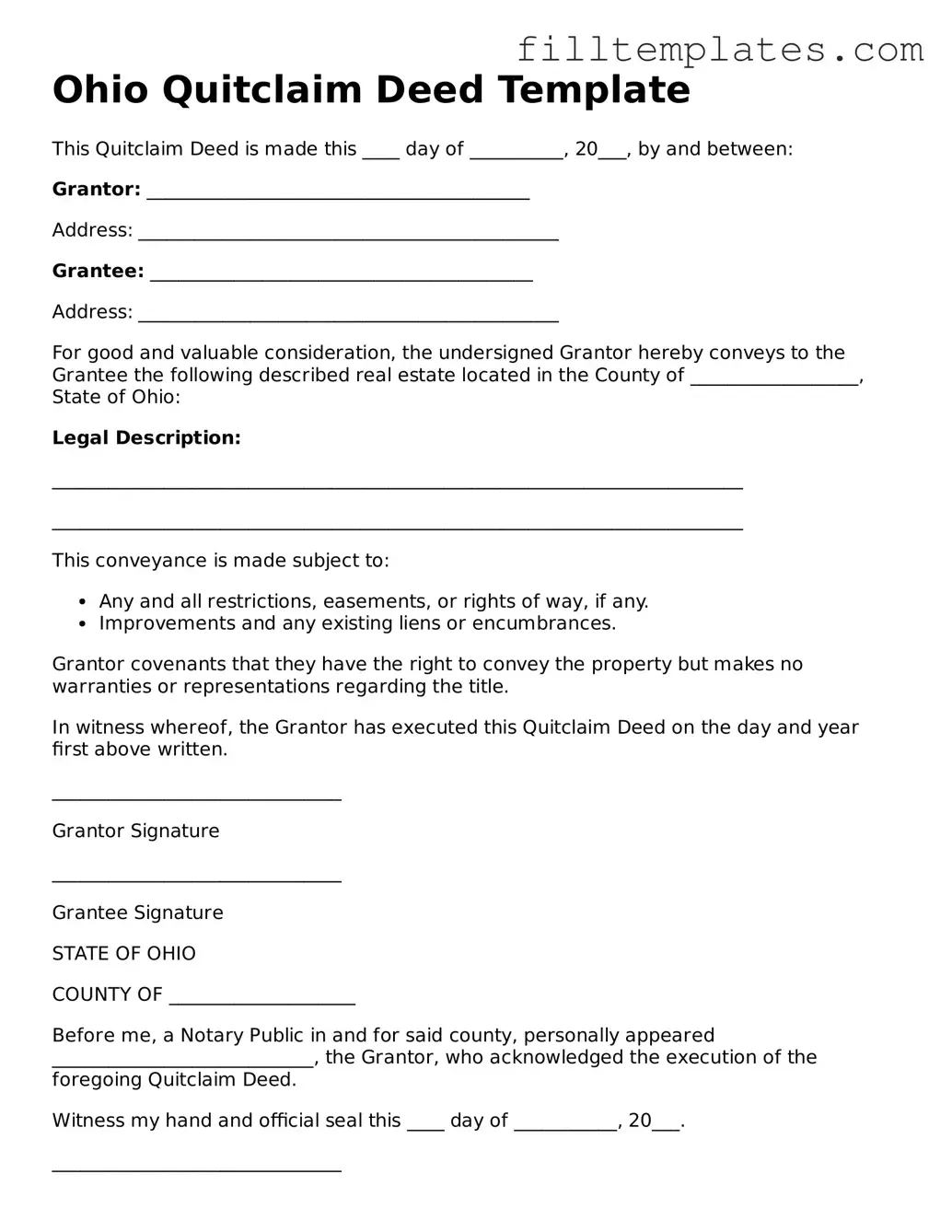Ohio Quitclaim Deed Template
This Quitclaim Deed is made this ____ day of __________, 20___, by and between:
Grantor: _________________________________________
Address: _____________________________________________
Grantee: _________________________________________
Address: _____________________________________________
For good and valuable consideration, the undersigned Grantor hereby conveys to the Grantee the following described real estate located in the County of __________________, State of Ohio:
Legal Description:
__________________________________________________________________________
__________________________________________________________________________
This conveyance is made subject to:
- Any and all restrictions, easements, or rights of way, if any.
- Improvements and any existing liens or encumbrances.
Grantor covenants that they have the right to convey the property but makes no warranties or representations regarding the title.
In witness whereof, the Grantor has executed this Quitclaim Deed on the day and year first above written.
_______________________________
Grantor Signature
_______________________________
Grantee Signature
STATE OF OHIO
COUNTY OF ____________________
Before me, a Notary Public in and for said county, personally appeared ____________________________, the Grantor, who acknowledged the execution of the foregoing Quitclaim Deed.
Witness my hand and official seal this ____ day of ___________, 20___.
_______________________________
Notary Public
My commission expires: _______________
